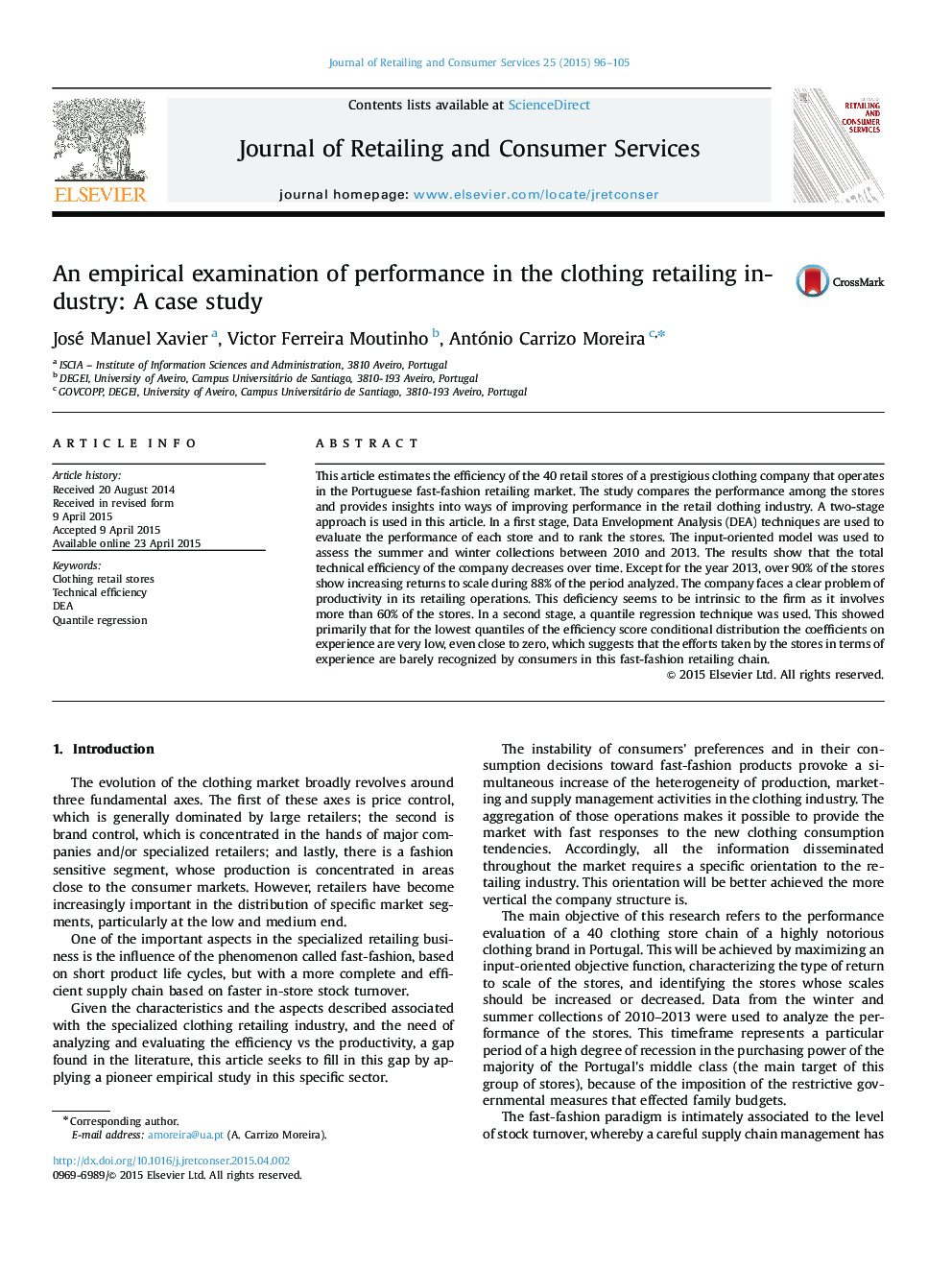| Article ID | Journal | Published Year | Pages | File Type |
|---|---|---|---|---|
| 1028803 | Journal of Retailing and Consumer Services | 2015 | 10 Pages |
•The article estimates the efficiency of a 40-store retailing company.•Performance among the stores are compared and improvement insights provided.•A two-stage approach is used as DEA and quantile regression techniques are applied.
This article estimates the efficiency of the 40 retail stores of a prestigious clothing company that operates in the Portuguese fast-fashion retailing market. The study compares the performance among the stores and provides insights into ways of improving performance in the retail clothing industry. A two-stage approach is used in this article. In a first stage, Data Envelopment Analysis (DEA) techniques are used to evaluate the performance of each store and to rank the stores. The input-oriented model was used to assess the summer and winter collections between 2010 and 2013. The results show that the total technical efficiency of the company decreases over time. Except for the year 2013, over 90% of the stores show increasing returns to scale during 88% of the period analyzed. The company faces a clear problem of productivity in its retailing operations. This deficiency seems to be intrinsic to the firm as it involves more than 60% of the stores. In a second stage, a quantile regression technique was used. This showed primarily that for the lowest quantiles of the efficiency score conditional distribution the coefficients on experience are very low, even close to zero, which suggests that the efforts taken by the stores in terms of experience are barely recognized by consumers in this fast-fashion retailing chain.
